We all know that airports occupy and consume huge areas of land mass, destroying ecosystems and creating massive urban heat islands of impermeable, hot surfaces. Take, for example, the Atlanta Hartsfield-Jackson International Airport (ATL) shown below – notice how the highest temperatures, shown in red, are the roof surfaces of the ATL terminal and concourses, followed by runways, parking and cargo areas:
You may remember that back in 2005 I wrote the paper “European Airport Greenroofs – A Potential Model for North America,” which looked at impacts of using a greenroof within airports as well as some of the potential barriers to greenroofs. I highlighted three massive and highly successful examples of greenroofs in place at the Amsterdam, Zürich, and Frankfurt International Airports.
At the time, only one greenroof had been installed at aviation facilities within the U.S. or Canada – at the King County International Airport Terminal Building (2003). The FAA and others had been hesitant given wildlife management issues, in particular the real threat of bird strikes.
Since then, many additional greenroofs have been constructed at airports worldwide with, not surprisingly, the City of Chicago leading the pack as part of their O’Hare Modernization Program (OMP).
 I had the pleasure of revisiting the issue last week at the Atlanta Aero Club at the beautiful Capital City Club in downtown Atlanta, where I was invited to give a short 5-minute presentation for their bi-monthly luncheon by the Club’s President, Steve Champness.
I had the pleasure of revisiting the issue last week at the Atlanta Aero Club at the beautiful Capital City Club in downtown Atlanta, where I was invited to give a short 5-minute presentation for their bi-monthly luncheon by the Club’s President, Steve Champness.
 Steve and his better half, Nancy Petroline, (both pilots) are friends of ours and felt the mixture of my passion for greenroofs and the very important fact that the President of Delta Air Lines, Ed Bastian, was the Keynote Speaker was prime for me to address greenroofs as sustainable design at airports here. Plus, the President of Gulfstream Aerospace Corporation, Joe Lombardo, was also on hand and both airline leaders received awards to celebrate their unique and important contributions to the airline industry.
Steve and his better half, Nancy Petroline, (both pilots) are friends of ours and felt the mixture of my passion for greenroofs and the very important fact that the President of Delta Air Lines, Ed Bastian, was the Keynote Speaker was prime for me to address greenroofs as sustainable design at airports here. Plus, the President of Gulfstream Aerospace Corporation, Joe Lombardo, was also on hand and both airline leaders received awards to celebrate their unique and important contributions to the airline industry.
“The Atlanta Aero Club is dedicated to providing a forum for matters affecting aviation in the Atlanta area, both commercial and general; recognizing and awarding those making the greatest contribution to furthering aviation in the Atlanta area; communicating and disseminating information affecting aviation; and promoting all aviation and recognizing its importance to the metropolitan area and to the State of Georgia.”
It was great to hear Ed Bastian again, and he shared his own passion for Delta Air Lines as a successful company coming through restructuring as well as a firmly dedicated hometown company (the number 1 employer here in Atlanta), highly invested in both its customers and employees. In fact, last month Delta marked 70 years in Atlanta with a celebration for employees and partners, and a $1.4 billion profit profit sharing payout was distributed on February 14.
Regarding investments, Delta’s plan is to allocate more than $2 billion in enhanced global products, services and airport facilities through 2013. In addition to improving Sky Clubs and upgrading its domestic fleet, Delta will offer full flat-bed seats on more than 100 widebody aircraft, feature personal, in-seat entertainment for both BusinessElite and Economy class customers on all widebody flights, and complete new terminal facilities for international customers at its two largest global gateways – Atlanta and New York-JFK.
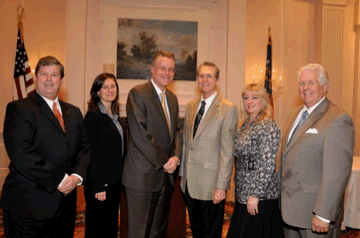
I was excited to speak to the approximate 150 members and guests of the Atlanta Aero Club, who were mostly pilots. Although I’m not a pilot, many of you who have been following me for years know that greenroofs is my second career ~ in January, 1996 I went back to school and received a Bachelor’s of Landscape Architecture from The University of Georgia in 2000 ~ while flying internationally as a flight attendant for Delta Air Lines (which I still do, at a minimum). I feel very fortunate to be able to combine my two careers – so you can see my particular interest in greening our airport roofs!
After some additional research and feedback, I began to add to the list of aviation profiles we have listed in The Greenroof & Greenwall Projects Database. Here’s the scoop:
We know that Chicago has led the way in North America in greenroof implementation for the past decade, including its airports. Above is an an aerial photo with “Urban Heat Island Priority Tiers” superimposed which identify hot spots at the O’Hare International Airport (ORD) while showing current and proposed greenroofs here.
Although Frankfurt International Airport (FRA) has a combined coverage of over 500,000 sf, the largest individual continuous greenroof at any airport in the world is found on the 4-acre FedEx Main Sort Building at O’Hare.
Located next to an active runway, the 174,442 sf roof was installed in May of last year and is just one of four buildings with vegetated roofs comprising the massive FedEx Cargo Relocation Project, totaling about 190,000 ft.
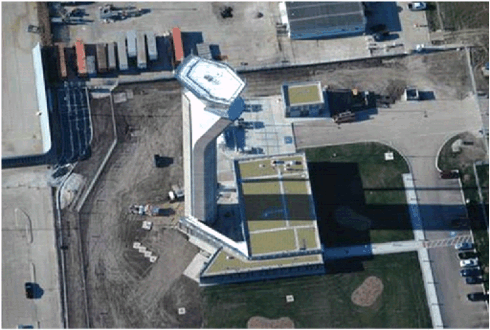
O’Hare also boasts the first FAA Control Tower in the U.S. with a greenroof, so we must be feeling pretty good about constructing them now at airports, now, don’t you think? According to the Chicago Department of Aviation, there is currently 229,355 sf of green roof space at O’Hare International Airport, with an additional 108,816 sf proposed at the United Airlines Cargo Facility (as of February, 2011).
Chicago’s Midway Airport (MDW) currently has 3,179 sf of greenroof space on the parking garage, with another 17,640 sf of greenroof proposed for the Consolidated Rental Car Facility. To learn more about Chicago’s greening initiatives at airports, see their Airports Going Green website (where you can even see PowerPoint presentations of the last two annual Airports Going Green Conferences), the Sustainable Airport Manual, and visit the Chicago Department of Aviation’s FlyChicago.com website.
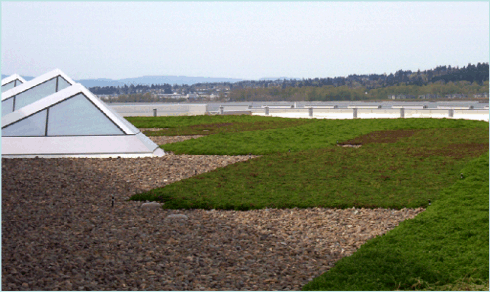
In the U.S., we now have at least 17 airport area greenroofs totaling almost 300,000 sf, and Chicago’s not the only government leader, either. Take Portland Oregon (PDX), above, for example, the U.S. Army and Air Force, and Heritage Flight, below:
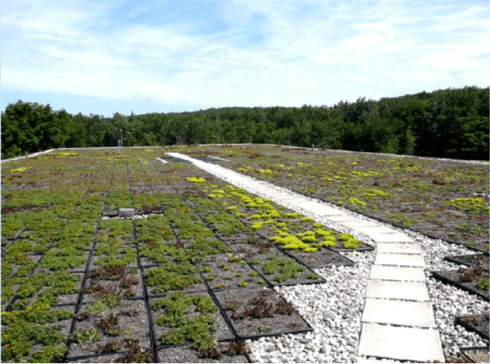
And Canada has at least 3 totaling about 3,000 sf, an intensive greenroof (below) and extensive greenroof at Vancouver International Airport (YVR) – not to mention their stunning greenwall at YVR Canada Line Station 4 – and an extensive greenroof at Toronto International (YYZ):
Here are some other cool living roofs atop airport buildings found internationally:
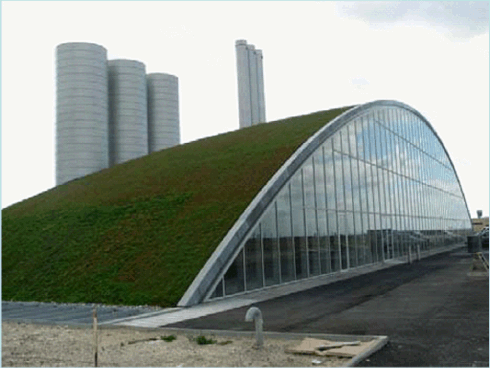
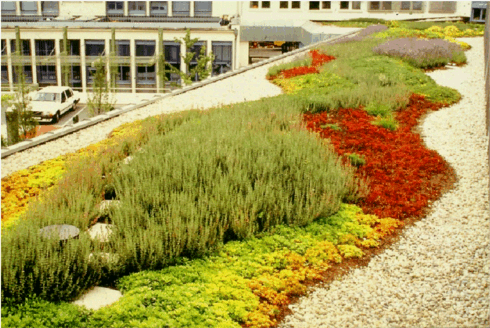
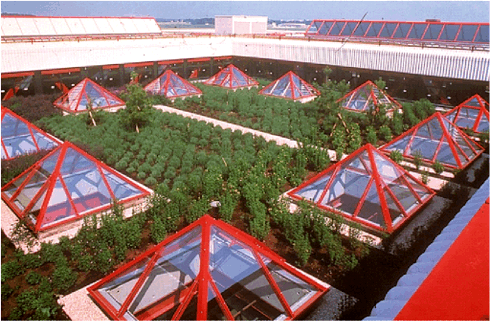
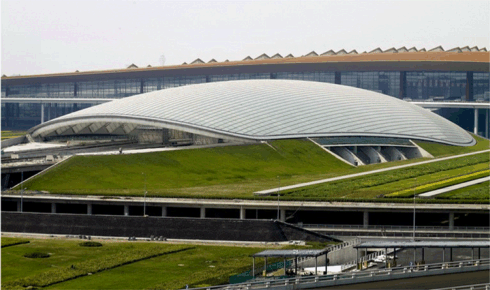
See what we have by searching The Greenroof & Greenwall Projects Database by selecting “Aviation” under Building Type > Application Type – if you want to define it, select a country, city, etc.
Does this mean that’s all there is? Of course not. This Projects Database is a living research document and because it’s community driven, we reply on everyone to help us keep it up to date. In fact, I have seen airport greenroofs myself at Narita International in Japan (NRT), Madrid (MAD), and Paris’ Charles de Gaulle (CDG) – (see a couple of photos below) – that aren’t included in the Projects Database because I don’t have enough info yet.
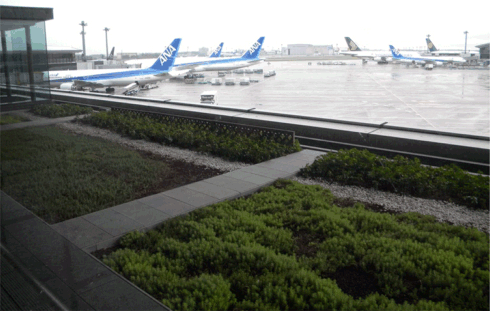
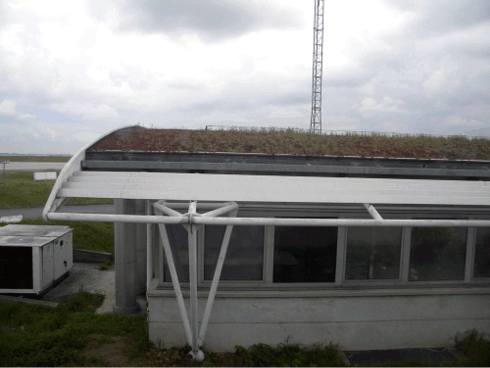
And I know there’s more at Paris’ Orly International Airport (ORY), Bordeaux (BOD), Stuttgart (STR), Münich (MUC), Bremen (BRE) and Düsseldorf (DUS), with many others planned or on the boards. So, I’d like to ask our greenroof community to please send in your photos and info on greenroofs across the world and I’ll share the profiles for all to see, like Jörg Breuning, of Green Roof Service, has been doing for years – see below the Fire Brigade at Stuttgart International Airport:
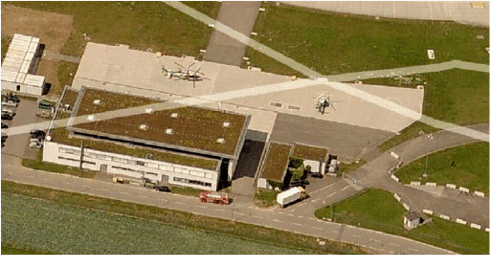
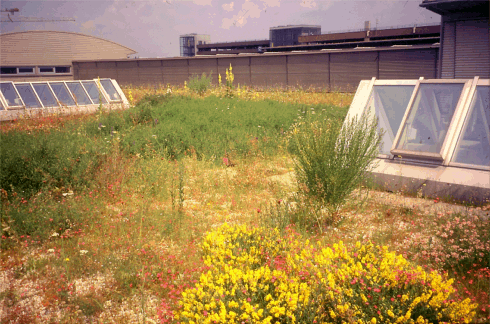
Because of time constraints, I couldn’t get into key design considerations with regard to the correct site selection of growing media and plants, but just touched on the importance of having a multi-disciplinary team on the Airport Wildlife Landscape Management team. Here’s my updated version of the “An Overview of Greenroofs at Airports: Greening Rooftops as Sustainable Design” Power Point which I presented last week to the Atlanta Aero Club:
Even though I was limited to just five minutes, I ended with a few slides of examples about combining photovoltaics with greenroofs – hey, if we’re going to be sustainable, we may as well go all the way!
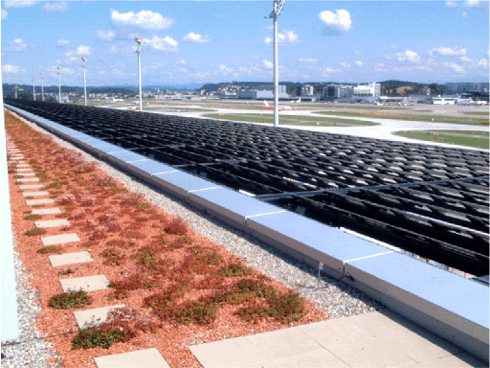
I’d like to give Steve Champness another big Thankyou! for offering Greenroofs.com and me this great opportunity to introduce vegetated roofs to many, and encourage sustainable design with greenroofs (and walls) at our public, private, and military airports worldwide. We need more leaders such as the City of Chicago, the City of Portland, OR, and others to continue to push building integrated greenery forward.
It’s easy to understand how Atlanta’s largest urban heat island, Atlanta Hartsfield-Jackson International Airport, can be significantly mitigated by incorporating living, breathing, greenroofs. Maybe Hotlanta won’t be so hot any more with some local support, strategic planning, and government and corporate visionaries.
Count me in for local support here in The ATL!

Ed Bastian, President of Delta Air Lines, and me on February 16, 2011 at the Atlanta Aero Club Luncheon.
~ Linda V.
 Greenroofs.comConnecting the Planet + Living Architecture
Greenroofs.comConnecting the Planet + Living Architecture
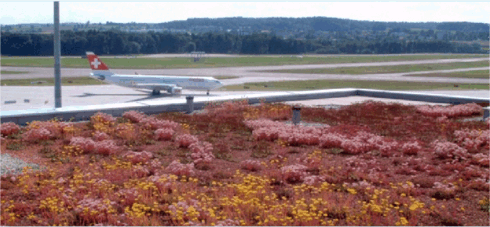

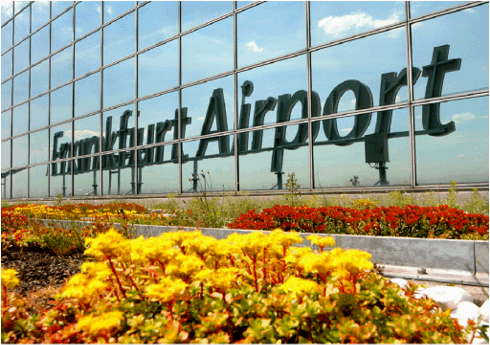
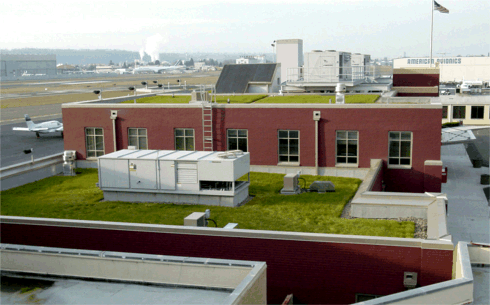
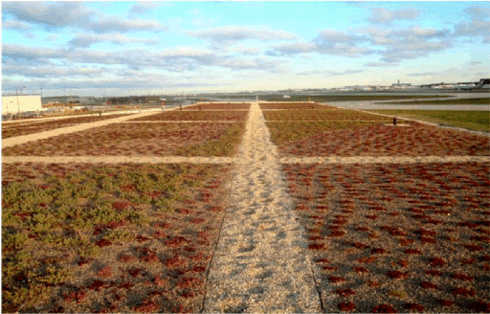
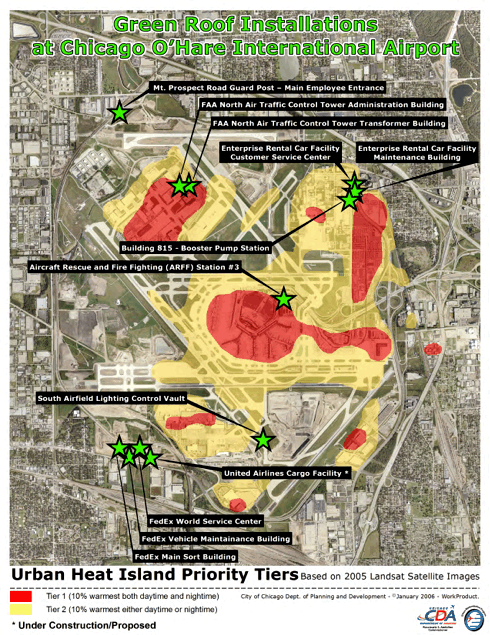
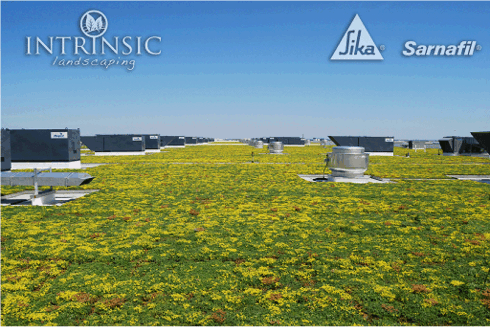
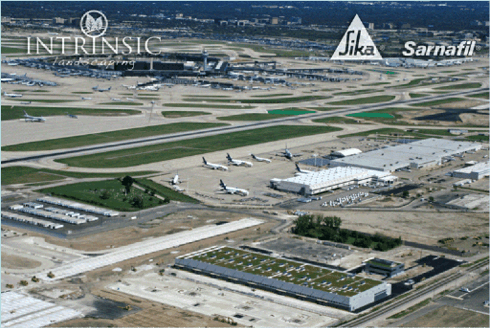
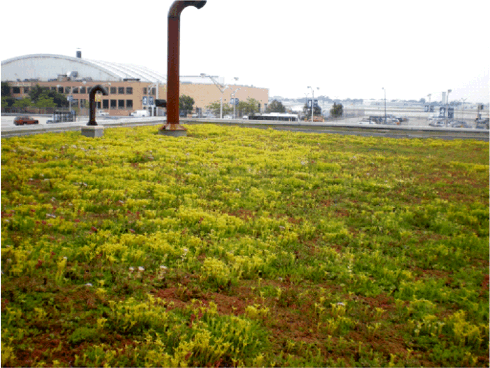
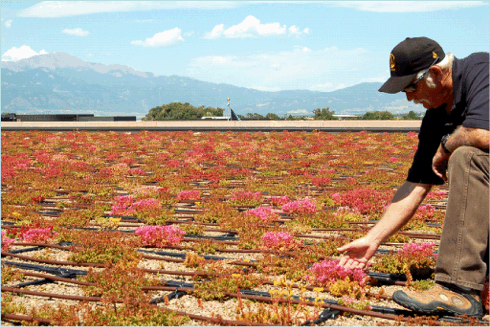
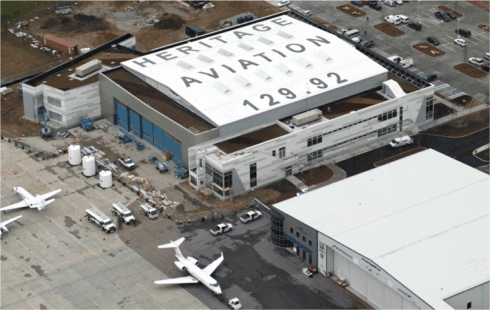
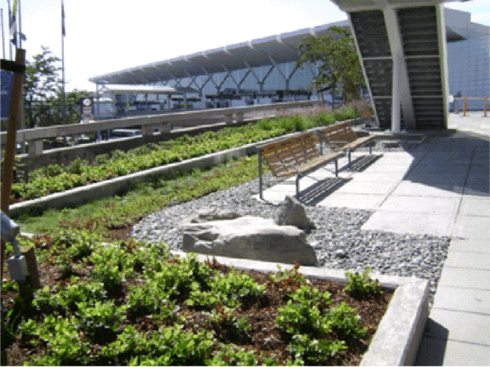






Sky Gardens » Blog Archive » Greenroofs & Walls of the Worldâ„¢ Virtual Summit 2011 Episode 3: Commissioner Rosemarie Andolino, Chicago Department of Aviation
[…] We all know that Chicago has led the way in North America in greenroof implementation for the past decade, including its airports. Â I first corresponded with Rosemarie in 2005 after I wrote the paper “European Airport Greenroofs – A Potential Model for North America,” which looked at impacts of using a greenroof within airports as well as some of the potential barriers to greenroofs. Â More recently, I had contacted the Chicago Department of Aviation about O’Hare and Midway International updates for a presentation I did at the Atlanta Aero Club last February – see: A Look (Again) at Airport Greenroofs. […]